Acupressure, a practice closely related to acupuncture, is a technique from Traditional Chinese Medicine (TCM) used to cure and alleviate a plethora of ailments in the human body. Unlike acupuncture (which is a practice that places small needles strategically in pressure points on the body for relief), acupressure is a practice that uses pressure from someone’s finger or hands-on acupressure points (or acupoints) throughout the body. All acupoints lie on meridians throughout the body. Meridians, according to TCM, are pathways in the body, each one corresponding to a vital organ. These pathways allow energy, or “qi” according to TCM, to flow through the human body. Engaging in acupoints along the qi pathways will alter energy flow, and targeting certain points can alleviate ailments or problems throughout the entire body, not just where the acupoint is. Engaging in a point on your foot could help with a headache; a point on your back could help with knee problems; a point on your palm could help elbow issues; and so on.
Acupressure can help with conditions varying from TMJ to headaches to cramps and even asthma. In this article, we are focusing on the 5 essential acupressure points for kidney according to a TCM practitioner. These acupoints, as certified by a TCM practitioner, can greatly help problems with the kidneys such as urination problems and kidney stones. If you are suffering from, or are known to suffer from, kidney issues: read on to learn how acupressure can help and critical acupressure points for the kidney.
Before we jump straight into the 5 essential acupressure points for kidney according to a TCM practitioner, it is important to answer some FAQs and become familiar with acupoints.
Is Acupuncture Good For The Kidney?
Short answer: yes! Acupuncture (and acupressure) can provide great benefits to all your organs, kidneys included. According to TCM, the practice can increase energy flow and bring energy to your kidneys to allow them to function properly and fully.
How To Balance The Kidney Yin By Activating The Kidney Acupressure Points?

The kidney is known as the “Yin” organ according to TCM, and you can balance this principle in your body by engaging acupressure points that affect the kidneys. Some of the acupoints listed below, such as Bl-23, are particularly good at nourishing the Kidney Yin.
Finding Acupoints
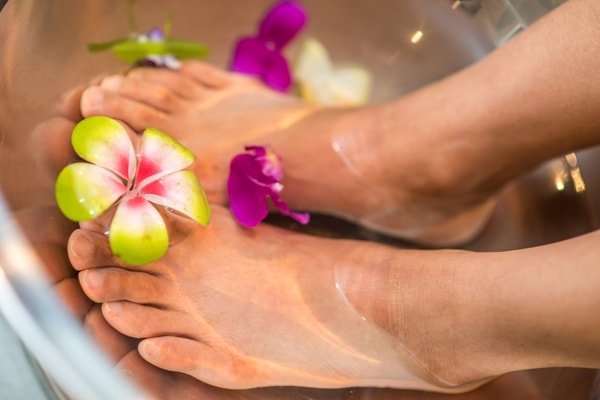
For acupressure to work properly and completely, it is crucial that you know how to find and engage acupressure points. As mentioned, all acupoints lie along meridians in the body. Acupoints are often found in crooks or divots on the body: the temple, behind the knee, and between fingers, to name a few examples.
When you engage an acupressure point, you will typically be able to instinctively know if you are pressing on the correct place. The spot may be sensitive, and you will likely feel a release, mild discomfort, or sometimes both. The length of time you press on the point and the amount of pressure you use will vary from point to point and person to person. On average, you want to use firm pressure for a couple of minutes. You typically do not want to massage the area; instead, use a constant firm pressure. If you experience significant pain or discomfort, stop engaging the acupressure point.
Now that you understand acupressure points and how to engage them, it’s time to jump into the best acupressure points for kidney.
The 5 Acupressure Points For Kidney
Acupoint: KI-1 (Other Names: Kidney-1/Yong Quan/Gushing Spring)
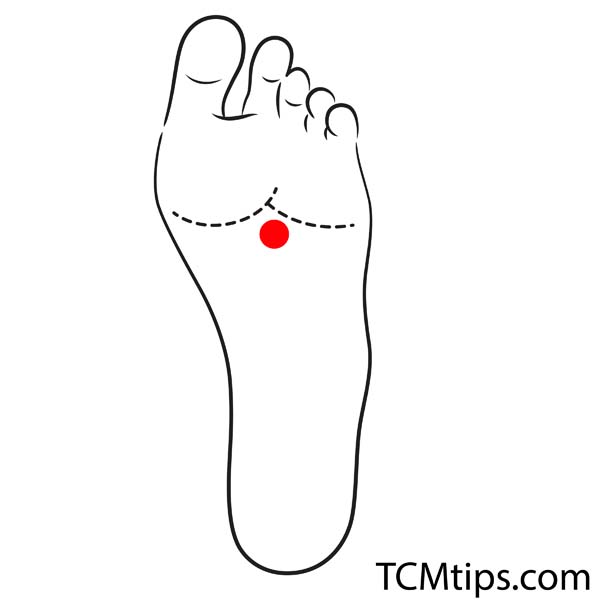
The Bubbling Well acupressure point is located on the bottom of the foot – more specifically on the sole of the foot. This point lies along the kidney meridian, so it does an excellent job of dispelling heat and allowing the kidneys to function properly. In addition to benefits for the kidney, this point can alleviate various ailments associated with the head, such as memory loss, dizziness, etc. There have even been studies that show engaging this pressure point will wake up those suffering from a coma more quickly than someone in a coma who does not have this point engaged.
To engage the kidney 1 acupuncture point, look at the bottom of your foot and find the small depression just below the sole of your foot. Apply firm pressure to this area for several minutes. The great thing about this acupressure point is you unintentionally engage it every day when you walk! Regardless, it is still a great practice to actively engage this point for kidney benefits.
Acupoint: KI-3 (Other Names: Kidney-3/Tai Xi/Supreme Stream)
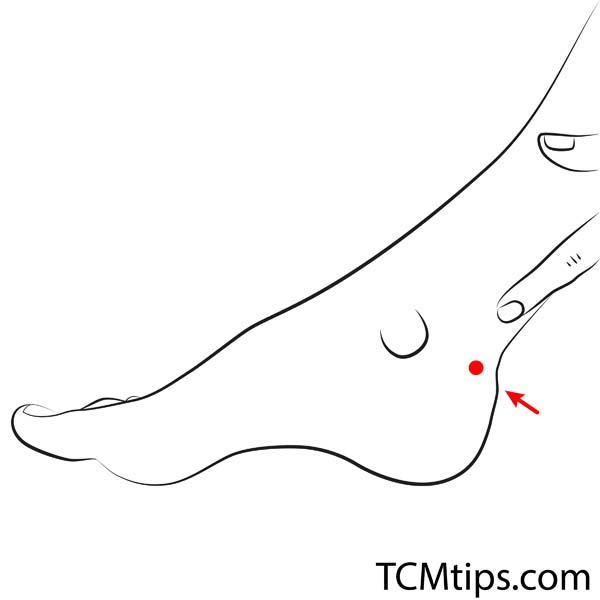
The Great Stream acupressure point, like the Bubbling Wall point, lies on the kidney meridian and is critical to our list of kidney acupressure points. This acupoint will help with many similar ailments as the Bubbling Wall point. For example, it will release heat from the kidneys and allow the kidneys to function properly. It can also help with dizziness, menstrual cramps, cough, vision blurring, and so much more. It is truly an “all-purpose” acupuncture point in that it can alleviate many ailments all throughout the body.
This acupoint is located on the inside of the ankle, close to the achilles tendon. To find, locate the knobby bone on the inside of your ankle then slide your finger directly back towards your achilles tendon. Place firm pressure for several minutes.
Together with the GB 2 acupuncture point, they are also commonly used to relieve tinnitus symptoms.
Acupoint: Ren-4 (Other Names: The Conception Vessel-4/Guan Yuan/Origin Pass)
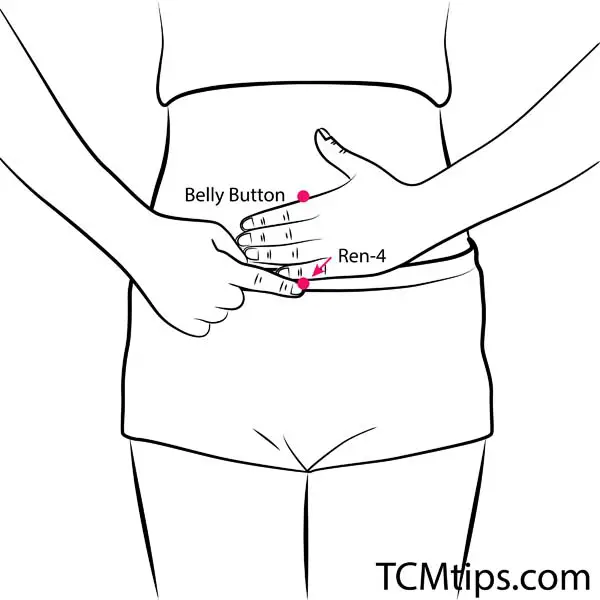
Unlike the acupressure points we have already discussed, the Ren-4 point lies on the anterior meridian of the body. The Origin Pass point can help with many bodily function issues associated with several of the vital organs. For example, engaging this point can help with menstrual cramps, urination issues, bowel issues, and kidney problems. Engaging this acupoint will nourish and strengthen the kidneys and the ovaries (if you are a woman). There are even further benefits you can experience from this point relating to the spleen and the small intestine.

The Origin Pass point is located on the lower abdomen, about 3 cuns directly below your belly button. Be careful when engaging this point, as the area can be sensitive for many people. Start with light pressure and gradually add more until you arrive at a firm pressure. It is not recommended that this point be used on pregnant women as it has a strong effect on the ovaries and could potentially induce early labor.
This acupoint is also typically used as one of the acupressure points for gas and bloating.
Acupoint: GV-4 (Other Names: The Governing Vessel-4/Ming Men/Life Gate)
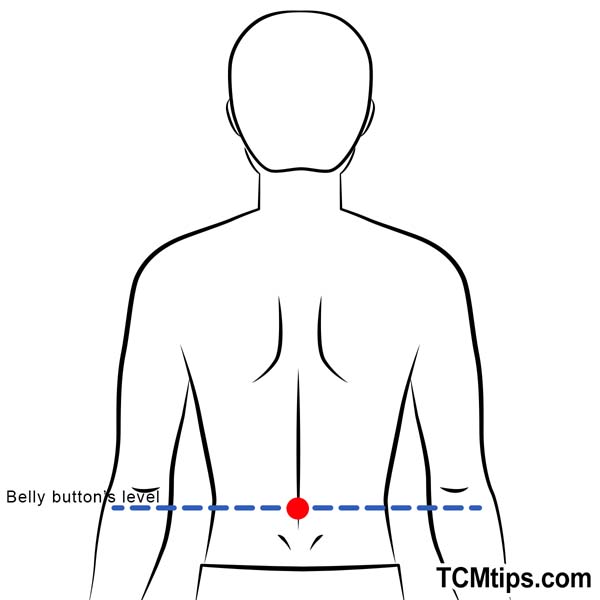
The Life Gate acupressure point is along what is known as “The Governing Vessel” and is located on the lumbar region of the human body. This point, like many of the others, can also help with menstrual and gastronomical issues by clearing heat from the body and strengthening the lumbar region. The Du-4 acupoint is known to “tonify” the kidneys, meaning the kidneys will gain more energy and thus be able to function properly. The tonification will allow the kidneys to be healthy and work in your body to their fullest potential.
The Life Gate point is located in the middle of the back, on the same level as your belly button. It is best to have someone else apply pressure on this point, as it can be difficult to engage yourself and to twist yourself to get to the point may cause more harm than good. However, when someone else properly places pressure on this point, you can experience great benefits for the kidneys.
Acupoint: Bl-23 (Other Names: Urinary Bladder-23/Shen Shu/Kidney Transporter)
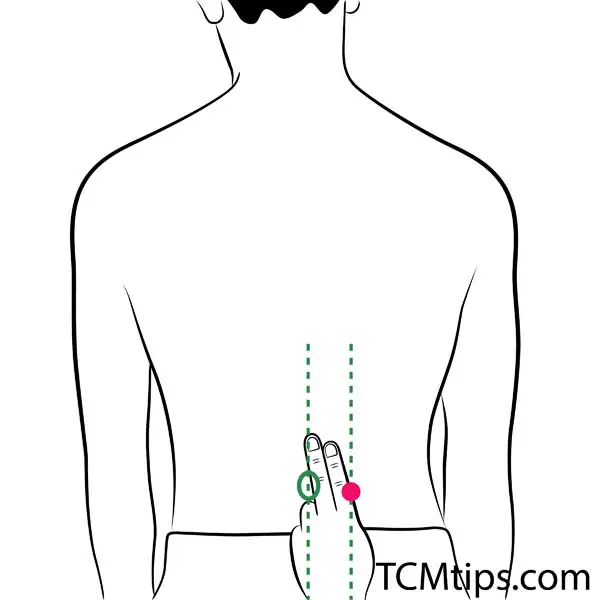
The Sea of Qi Transporter acupressure point is located on the bladder meridian. This acupoint has a plethora of benefits for the kidneys and is a key point in acupressure for kidney stones. Like the Life Gate point, Bl-23 can tonify the kidneys as well as strengthen the kidneys’ ability to receive energy. This acupressure point can also “nourish Kidney Yin and Essence” and regulate urination, potentially resulting in alleviation of and passing of kidney stones. Like many of the other points discussed, this point can help with menstrual and bowel issues and should be avoided or used cautiously on pregnant women.
This acupoint is also located on the back, about 1.5 cun on either side of the spine. It is also on the same level as your belly button. Like the Life Gate point, the most effective and safe way to engage this point is to have someone else do so. Make sure they apply firm pressure and for several minutes.
You can also massage this acupoint point and kidney 9 acupuncture point daily to rejuvenate your hair.
Bonus Acupoint for Kidney Stones: Acupoint: LI-4 (Other Names: Large Intestine-4/He Gu/Joining Valley)
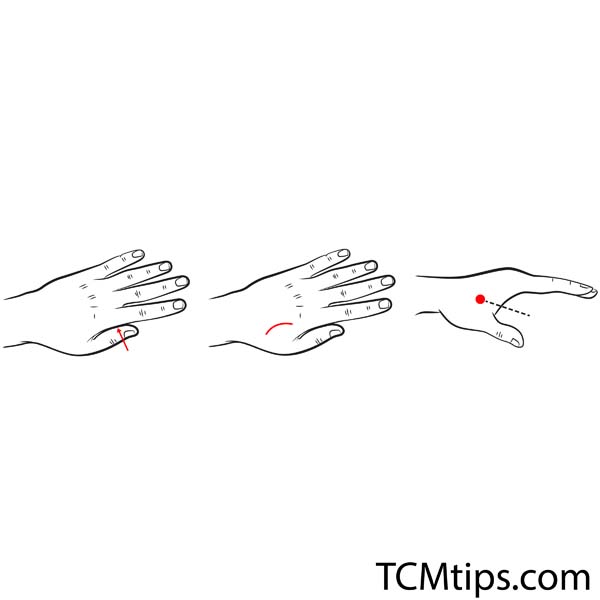
The final acupoint we will discuss (as a bonus to the list of the 5 essential acupressure points for kidney according to a TCM practitioner) is the Junction Valley acupressure point. Located on the large intestine meridian, this easy-to-find point can serve a variety of purposes and is the best acupoint for kidney issues on our list. There have been studies showing alleviation of headaches and jaw pain when engaging this acupressure point. Most importantly, this point is great for moving energy and clearing out the major organs, helping greatly with kidney stones. Like the other points, Li-4 can induce labor and its use should be avoided on pregnant women.
To find the Junction Valley acupressure point, simply locate the webbed area between your pointer finger and thumb. The point is located just back from the webbed area. You should be able to feel the fleshy part of your hand when you press on the acupoint. This point is very easy to engage yourself, and you should hold pressure for 1-2 minutes to reap all the benefits.
LI-4 is one of the top 10 acupressure points to relieve body pains and aches.

Try our Anti-Aging Gua Sha Tool designed to bring out your skin’s natural glow.
Best Gua Sha Product- Anti-Aging: The tool is designed to target 11 specific aging signs such as wrinkles and sagging skin. By following the 7-step routine, users can improve skin firmness and reduce fine lines naturally.
- Enhances Skincare Routine: It works effectively with serums and lotions, boosting absorption and efficacy of skincare products.
- Visible Skin Improvement: Users can expect a smoother complexion, reduced puffiness, and a more youthful appearance.
 P. Sze
P. Sze 
















